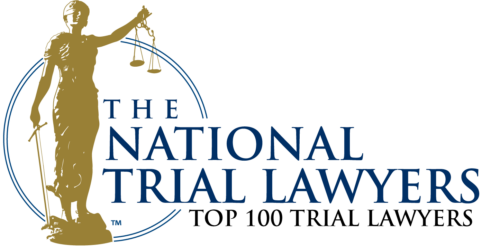Some personal injury situations, such as a routine slip and fall, may seem particularly straight-forward in regard to the parties involved and the duties owed. However, even in a relatively straightforward scenario such as where there is only one potential negligent, careless, or reckless individual, there may nevertheless be questions about whether the injury victim contributed to causing his or her own accident or severity of injuries. If there can be confusion over fault in a relatively simple injury involving only two parties, consider the level of uncertainty that can exist regarding apportionment of fault in a multi-vehicle pile-up on the Pennsylvania Turnpike.
However, even if you are meritorious in your claims regarding responsibility, the apportionment of fault made during the trial can make the collection of a jury award more difficult. Therefore, it is essential to understand how the courts in Pennsylvania utilize apportionment of fault. Once an understanding of Pennsylvania’s comparative fault system is gained, one should be able to see how strategic lawyering in the early stages of a matter can increase the likelihood of a financial recovery to cover hospital bills, physical therapy, and other expenses.
Pennsylvania Car Accidents, Slip and Falls, and other Personal Injuries are Administered under a Modified Joint and Several Liability Regime
In Pennsylvania, courts adhere to a concept known as joint and several liability. In a pure version of joint and several liability, any defendant who is found to be liable or responsible for an injury to any degree – no matter how slight – could be held responsible for the full amount of judgment. That is, even if an individual was found to be only 10 percent responsible for an accident, he or she could be held 100% liable for the awarded damages. As such, it was possible that a third party could face a disproportionate impact. As such, Pennsylvania modified its joint and several liability scheme.

Under Pennsylvania’s Fair Share Act, 42 Pa.C.S.A. § 7102, the general intent was to rectify the potentially disproportionate impact as set forth in the previous paragraph. While the law does accomplish this goal, it also brought additional unintended impacts in the fact that the law can make it more difficult for injury victims to achieve a full recovery.
Under the law, the general rule is that any responsible party is only financially responsible up to the percentage of fault assigned. Thus, if two individuals were found to each be 50 percent responsible for causing a car or truck accident, each individual would be responsible for only half of the judgment. If the injury victim wishes to make a full recovery, he or she will need to affect recovery from each plaintiff. Now, imagine that there are five defendants and each one is found to only be 20 percent responsible for the accident. Clearly, one can begin to see the additional difficulties an injury victim might experience following trial when it comes time to try and collect the jury award.
However, these difficulties are somewhat mitigated by a number of exceptions to the rule. In certain circumstances, a pure joint and several liability regime can apply. In situations where a defendant has made an intentional misrepresentation, released or threatened the release of a hazardous substance under the Hazardous Sites Cleanup Act, or served alcohol to a visibly intoxicated patron under Section 497 of the Liquor Code then these individuals can be held liable for the full judgment. Furthermore, if the defendant has engaged in an intentional tort, meaning they intended to cause an injury to another person — such as assault –then these individuals can also be held liable under a pure joint and several liability regime.
However, the most commonly cited scenario where an exception to the Fair Share Act exists is when a defendant is found to be at least 60 percent responsible for an injury. While this provision can be beneficial, it does require strategic litigation planning.
It Is Essential to Assess All Potentially Liable Parties
The passage of the Fair Share Act upended some long-held practices regarding the pursuit of a personal injury claim. For one, prior to the passage of the law, it was common practice for the attorney of an injury victim to join all potentially liable parties no matter how remote or slight their involvement was. This made sense because any individual who was in any way responsible for the accident and injury could be held to pay the full amount of damages. However, under the current approach, joining numerous and potentially tangentially related parties could dilute each party’s responsibility far below the 60 percent threshold.
Therefore, there is are significant legal and practical considerations behind the parties named in the suit. Furthermore, it is important to recognize that defendants may recognize the same and take steps to join parties who played little to no role in the accident in the hopes that liability for their client will be diluted below the 60 percent threshold. Ordinarily, a party may be joined within 60 days of original service under Pa.R.C.P. 2252 and 2253. It is essential for an injury victim to develop a strategy regarding potentially responsible parties in their matter.
Furthermore, it is also important to note that certain conduct by tortfeasors can also serve as an exception to Pennsylvania’s Fair Share Act. That is, violations of dram shop laws prohibiting serving visibly intoxicated persons and intentional torts are two carve-outs where pure joint and several liability can apply regardless of the apportioned percentage of fault. Therefore, it is enormously important for a personal injury lawyer to set forth and clearly articulate all potential theories for recovery.
A Personal Injury Attorney Understands Certain Defense Counsel Tactics
It is also important to address the fact that, under the Fair Share Act, defendants in Pennsylvania may be more willing to proceed to trial than in jurisdictions where a pure joint and several liability regime applies. As applied in personal injury matters, this means that insurance companies and other third parties may be less willing to settle or more willing to make a low-ball initial offer. However, when there are multiple, minimally liable tortfeasors who are properly joined in a personal injury matter, this may create an opportunity for joint settlements.
Lawyers Provide Strategic Personal Injury Representation
For more than three decades, the Philadelphia personal injury lawyers of The Reiff Law Firm have strategically represented personal injury victims. When injured Philadelphians and Pennsylvanians work with our law firm, you can expect a strategic approach to your matter. We assess and consider how the law will apply to unique aspects of every personal injury matter and work to develop a legal strategy that presents a viable road to compensation for our client. To discuss your car accident, slip and fall, or other personal injury matter with an experienced lawyer, please call The Reiff Law Firm today at (215) 709-6940.
Related Posts
- What Happens if You are Injured on Someone Else’s Sidewalk in Pennsylvania?
- Can I Settle My Pennsylvania Car Accident Case without Going to Court?
- How Long Does it Take to Rehab After a Spinal Cord Injury?
- NTSB Report in Fatal Bus-Truck Crash Identifies Problem in Commercial Bus Flammability Standards
- King’s Dominion Water Park Closes Inner Tube Raft Ride after Serious Injuries















